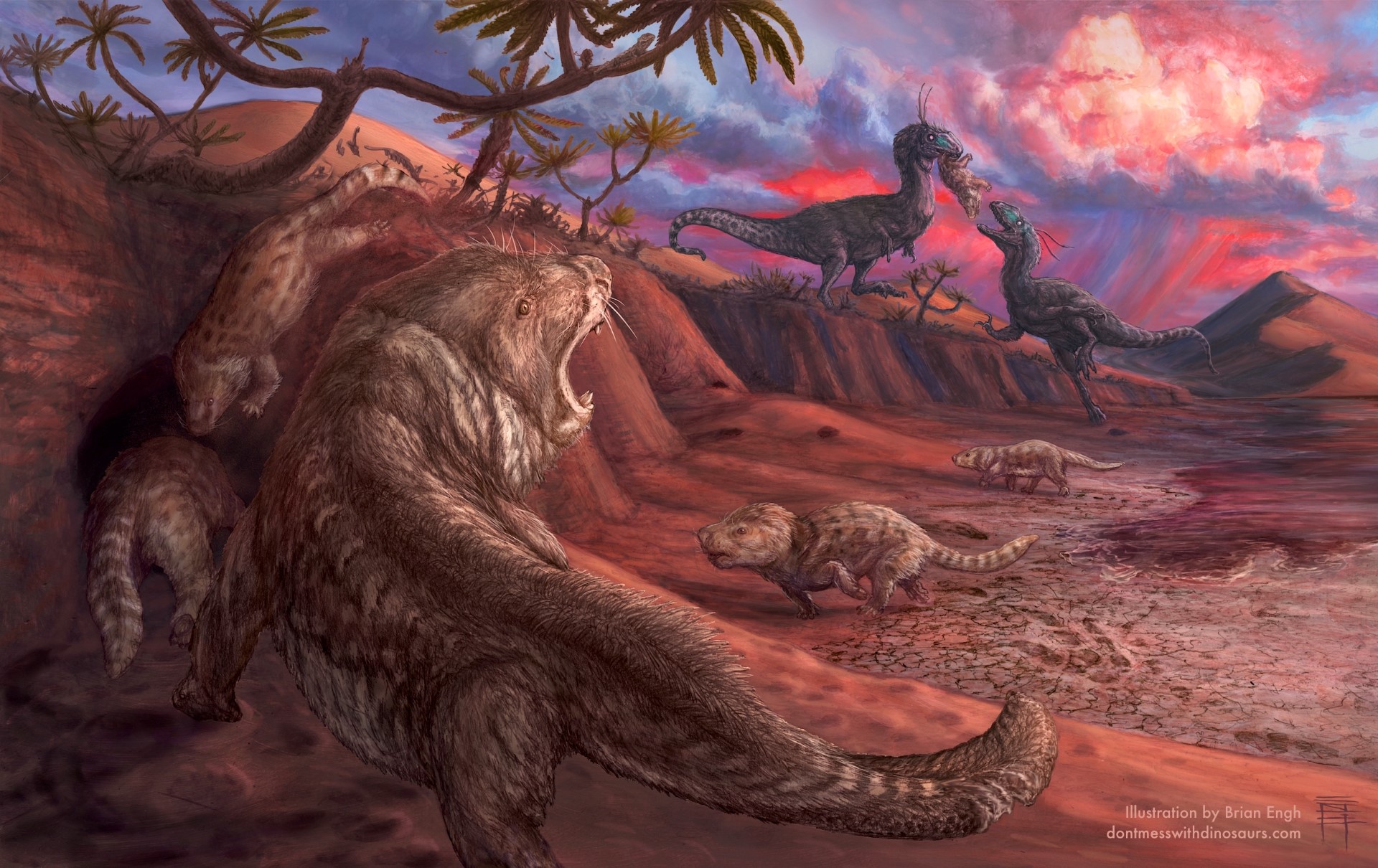The receding waters of Lake Powell have revealed some extremely rare fossils from the Jurassic period.
Paleontologists had been documenting fossil tracks in the Glen Canyon National Recreation Area in Utah when they came across a bonebed containing fossils of a tritylodontid—an extinct mammal-like reptile that lived 180 million years ago.
The fossils, which include bones and teeth, are extremely rare and the first tritylodontid bonebed to be found in Utah’s Navajo Sandstone, a geological formation in the Glen Canyon, the National Park Service reports.
These fossils are some of the most important discovered in the United States this year—not just because they give researchers insight into the species but because they shed light on the history of Lake Powell’s changing shorelines.
The bonebed was previously submerged by Lake Powell, which, due to prolonged drought in the area, has seen declining water levels in recent years.
Paleontologists found the fossils in March. They happened to be in “the right place at the right time,” the NPS said, before a record amount of snowmelt flooded the lake, making it impossible to access. Lake Powell is replenished seasonally by snowmelt flowing down from the surrounding mountains through the Colorado River. While river flows have been low for many years, this year saw a record amount of snowmelt that accumulated through a particularly wet winter.
This meant that paleontologists had a very short amount of time to recover the fossils before they would be completely submerged once again.
“Studying these fossils will help paleontologists learn more about how early mammal relatives survived the mass extinction at the end of the Triassic Period and diversified through the Jurassic Period,” the NPS said.
Several hundred pounds of rocks containing the fossils were removed from the site and taken to labs for more research.
The fossils will become part of the Glen Canyon NRA museum collection to be housed at the Prehistoric Museum in Price, Utah.
Lake Powell is surrounded by huge geological formations that contain many more uncovered fossils.
“The most famous and abundant fossils known from Glen Canyon NRA are the footprints of meat-eating dinosaurs in the Glen Canyon Group,” the NPS said in a statement. “This series of sedimentary rocks, named after their exposures along the canyon itself, were laid down by rivers, lakes, streams and deserts from the Late Triassic Epoch through the Early Jurassic Epoch. One of the largest mass extinctions in Earth’s history happened during this period.”
While the drought in the southwestern United States poses many concerns over a water shortage, the receding water levels in some reservoirs and lakes have revealed some interesting findings.
The declining water levels of neighboring Lake Mead, located in Nevada and Arizona, have revealed a multitude of shipwrecks and artifacts.
This has also occurred in other areas of the U.S. that are experiencing dry conditions.
Dinosaur footprints from millions of years ago were revealed in the midst of a severe drought in Texas last year.
The footprints were discovered in the Dinosaur Valley State Park in Glen Rose when the Paluxy River’s water levels decreased amid severe temperatures.
Do you have a tip on a science story that Newsweek should be covering? Do you have a question about fossils in the Glen Canyon? Let us know via science@newsweek.com.

